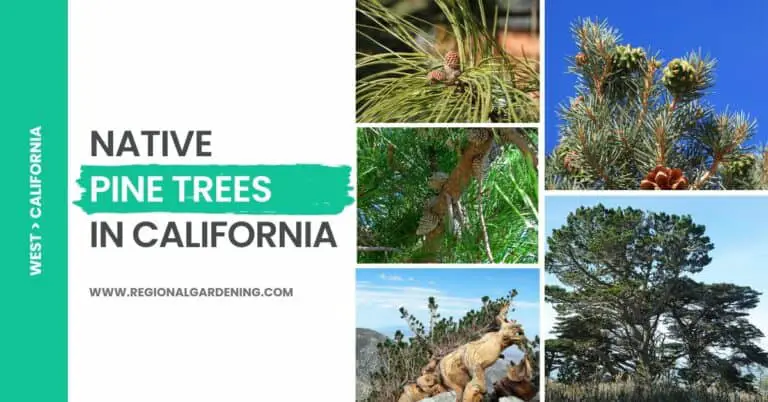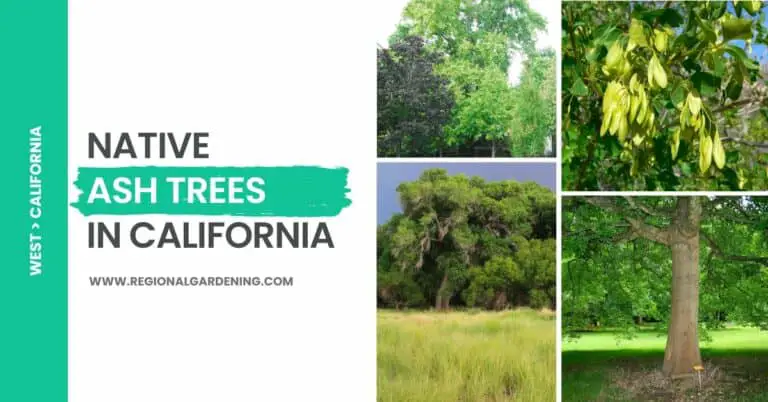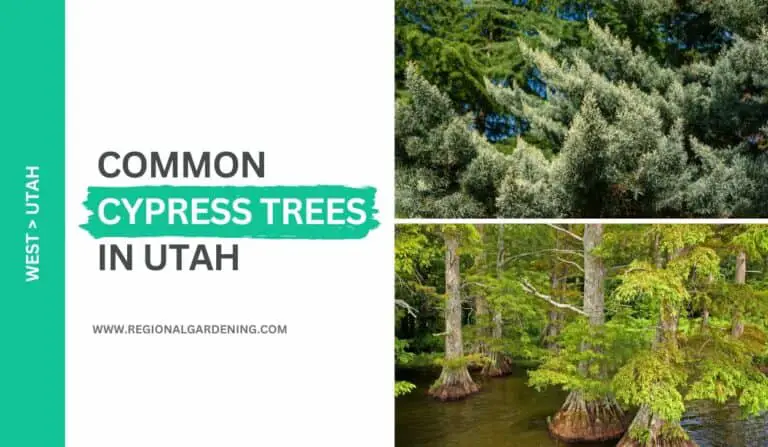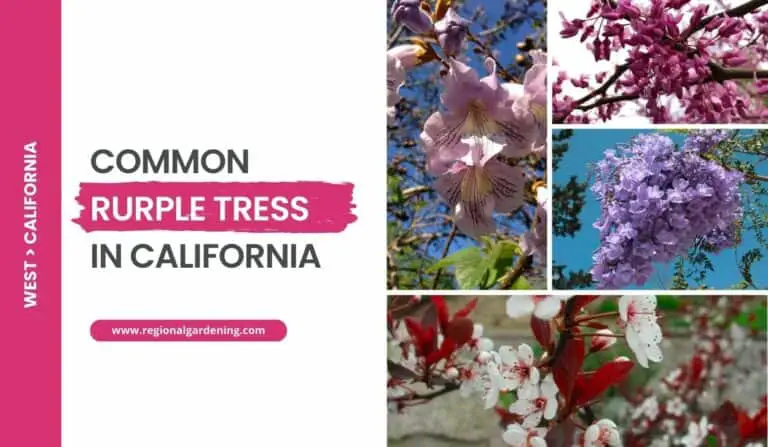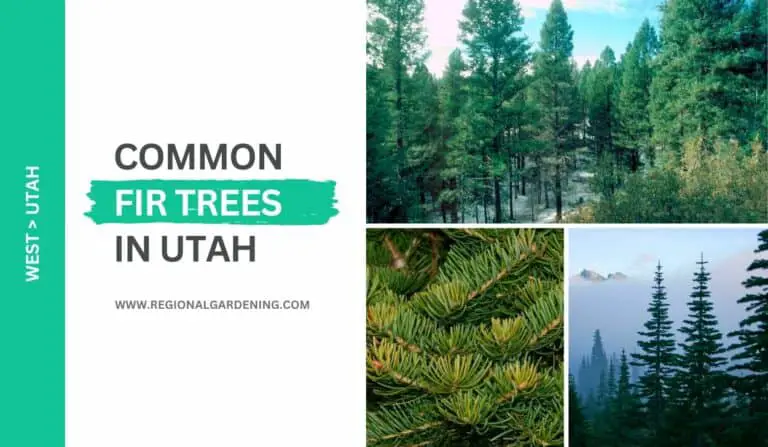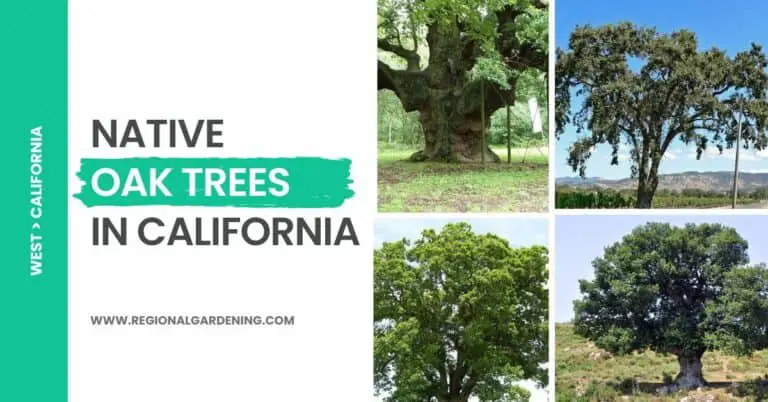4 Common Juniper Trees In Utah (Photos & Identification)
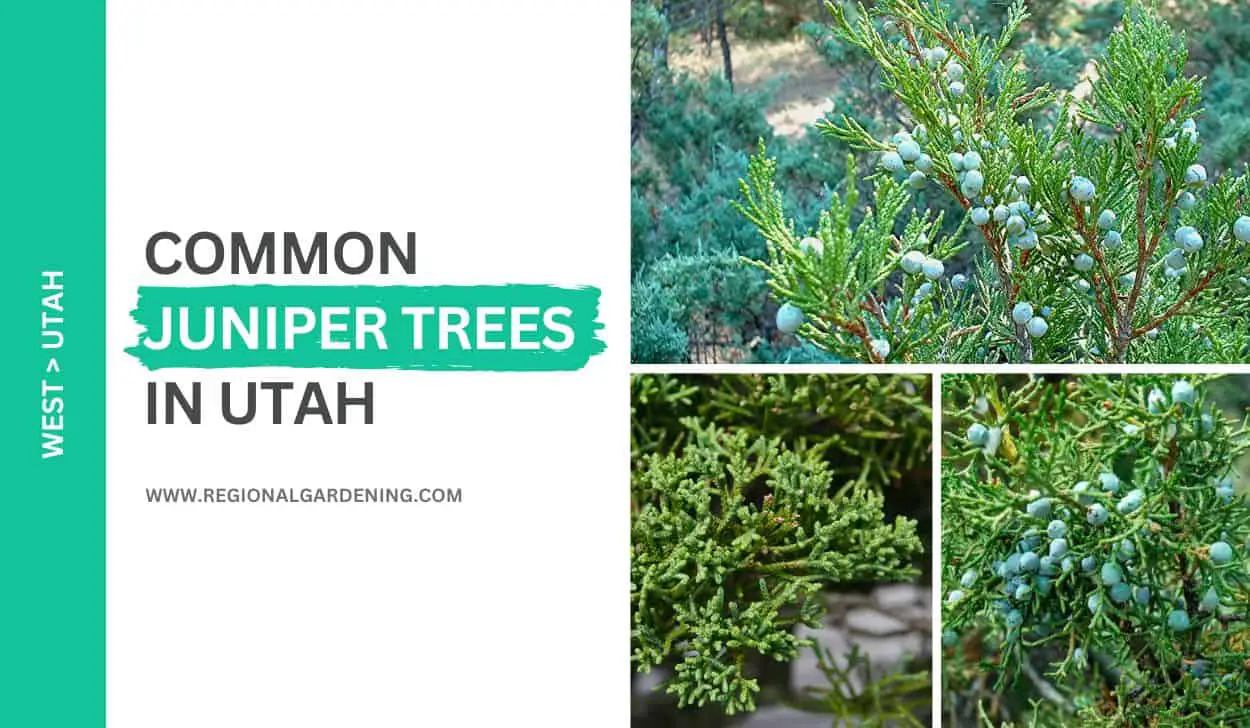
Juniper trees, which are members of a genus of evergreen coniferous trees and shrubs, adorn Utah’s landscapes with their distinct characteristics.
These magnificent trees add a touch of natural beauty to the state with their scaly or awl-shaped foliage that envelops young twigs. Thirteen of the approximately 50 to 70 juniper species are native to the United States, with Utah having two tree-sized native species.
And, in this article, I will walk you through the 4 commonly found juniper trees in Utah, including the native ones and non-native varieties grown for purely ornamental purposes. Each tree is provided with high-quality distinct pictures and a detailed description for easier understanding.
1. Utah Juniper
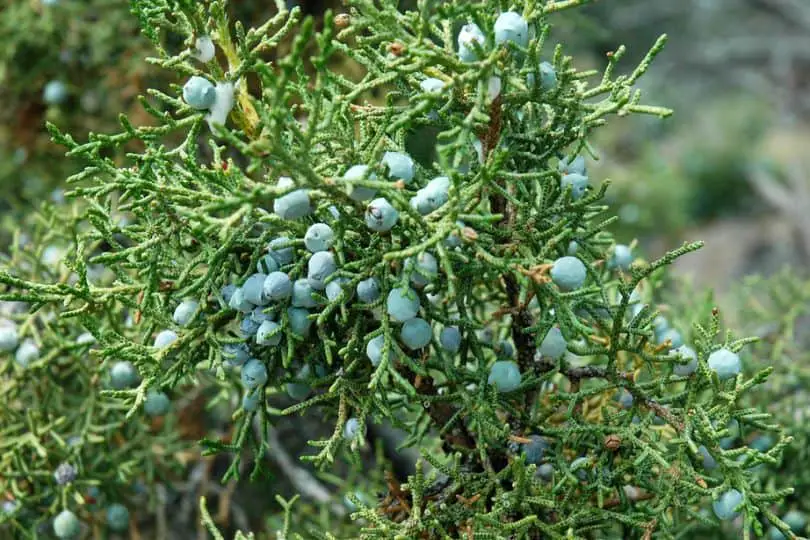
- Common Name: Utah Juniper
- Scientific Name: Juniperus osteosperma
- Mature Height: Up to 15 feet
- Native/Non-Native: Native to most of Utah
- Flowers/Fruits: Berry-like fruit takes two years to mature; it is nearly round.
- Uses: Little used except for fence posts and firewood. Also for xeriscapes.
The Utah Juniper is a juniper plant endemic to the west-central Rockies and Great Basin, including the majority of Utah. It is one of the shortest juniper trees in Utah and grows to around 15 feet in height when completely mature.
The Utah Juniper’s leaves, like those of other junipers, are tiny and scale-shaped. They are yellow-green in hue and evergreen, which means they remain green all year. This tree’s twigs are coated in leaves, giving them a harsh and rigid texture. The twigs at the ends of the branches are firmly clamped.
The Utah Juniper normally has monoecious flowers, which means it has both male and female flowers on the same tree. The tree’s fruit is berry-like and matures in two years. The fruits are virtually spherical and range in size from 1/4″ to 3/4″. They are reddish-brown in hue and frequently have a white, waxy coating. Typically, the fruits contain only one seed.
The bark of the Utah Juniper is dark and fibrous with a scaly texture. Except for fence posts and fuel, the tree’s wood is rarely used. The tree’s heartwood is yellow-brown and extremely sturdy, while the sapwood is white.
The Utah Juniper is exceptionally hardy and can endure harsh climatic conditions such as drought, cold, and heat. It can also withstand a wide range of soil conditions and thrives in dry, rocky regions. It does not, however, tolerate shade well.
Although not typically utilized in landscaping, the Utah Juniper can give a fascinating texture to xeriscapes. This tree, however, may be difficult to find in nurseries. The Utah Juniper is hardy in zones 3-7, which means it may thrive in a variety of conditions.
2. Rocky Mountain Juniper
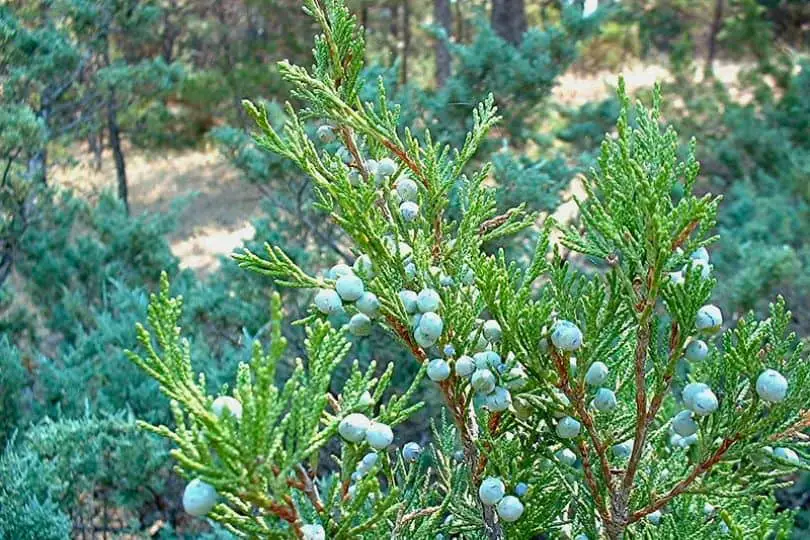
- Common Name: Rocky Mountain Juniper
- Scientific Name: Juniperus scopulorum
- Mature Height: Up to 40 feet
- Native/Non-Native: Native to Utah
- Flowers/Fruits: Dioecious with berry-like fruit that takes two years to mature; bright blue and often covered with a white coating; usually contains two seeds.
- Uses: Often used in windbreaks, visual screens, and foundation plantings; has many cultivars with different foliage colors.
The Rocky Mountain Juniper, Juniperus scopulorum, is a unique plant found in the western Great Plains, Rocky Mountains, and southwestern Canada, including Utah. It is a medium-sized tree that can reach a height of 40 feet.
The leaves of the Rocky Mountain Juniper are one of its most distinguishing characteristics. They are awl-shaped or scale-like and pushed on the twigs. The leaves vary in color, but they normally retain a lovely blue-green tint even throughout the winter. This keeps the tree looking vibrant and evergreen all year.
The twigs of the tree are slender, and the elder ones are reddish-brown. The Rocky Mountain Juniper’s bark peels off in small strips, giving it a distinct appearance. Similar to the eastern redcedar, the wood of this tree is soft and lightweight, and it is frequently utilized for a variety of purposes.
The Rocky Mountain Juniper is unique in that it is dioecious, which means that it contains separate male and female plants. Female plants produce berry-like fruits that mature after two years. These blue fruits are often covered with a white coating. There are normally two seeds inside the fruits.
The Rocky Mountain Juniper is commonly utilized in windbreaks due to its toughness and ability to retain lower branches. It’s also a popular choice for foundation plantings and visual screening. There are numerous varieties of this tree available in the landscape trade, each with a unique set of leaf colors.
The Rocky Mountain Juniper is drought-tolerant and may thrive with very little water once established. It prefers full light and does not tolerate shadow well. This tree is most abundant in zones 3 through 7.
3. Eastern Red Cedar
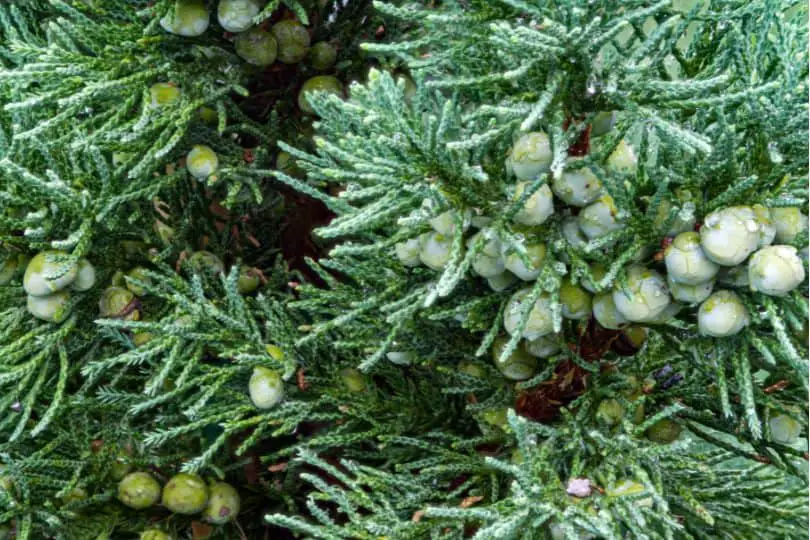
- Common Name: Eastern Redcedar
- Scientific Name: Juniperus virginiana
- Mature Height: Up to 40-50 ft.
- Native/Non-Native: Native to the eastern United States, but not native to Utah.
- Flowers/Fruits: Dioecious. The fruit is berry-like, round, and about 1/4” in diameter.
- Uses: Fence posts, closet and chest lining, novelties, and ornamental purposes.
The Eastern Redcedar, scientifically known as Juniperus virginiana, is a medium-sized tree that can reach heights of 40-50 feet. Although the name says cedar, they are not true cedars and are part of the juniper family. Because of their similarity with both cedar species and juniper trees, they are always included in the list of both cedar trees and juniper trees.
It is indigenous to the eastern United States but not to Utah. Eastern Redcedar leaves are awl-shaped or scale-like, and both forms can be found on the same tree. They start blue-green and then turn red-brown to purple in the winter. Eastern Redcedar flowers and fruit are dioecious. The fruit is spherical and about 1/4” in diameter, with a white, waxy coating that is frequently blue or purple. There are two or three firm seeds inside the fruit. The fruit matures in a single season.
The Eastern Redcedar’s wood is comparable to that of the Rocky Mountain juniper. It is used to make fence posts, closet and chest lining, novelty items, and ornaments. Juniper wood and foliage are also extracted for oils and other components used in fragrances, pharmaceuticals, and other items. The heartwood of the Eastern Redcedar is extremely resistant to rot, making it ideal for fence posts.
The Eastern Redcedar is a tough and long-lived tree. It grows at a medium to slow rate and can withstand moderate shade. It is widely utilized as a windbreak or hedge tree, though its winter color is not as appealing as that of the Rocky Mountain juniper. However, there are some good Eastern Redcedar varieties available for landscaping usage. It is often grown in USDA zones 2-9.
4. Chinese Juniper
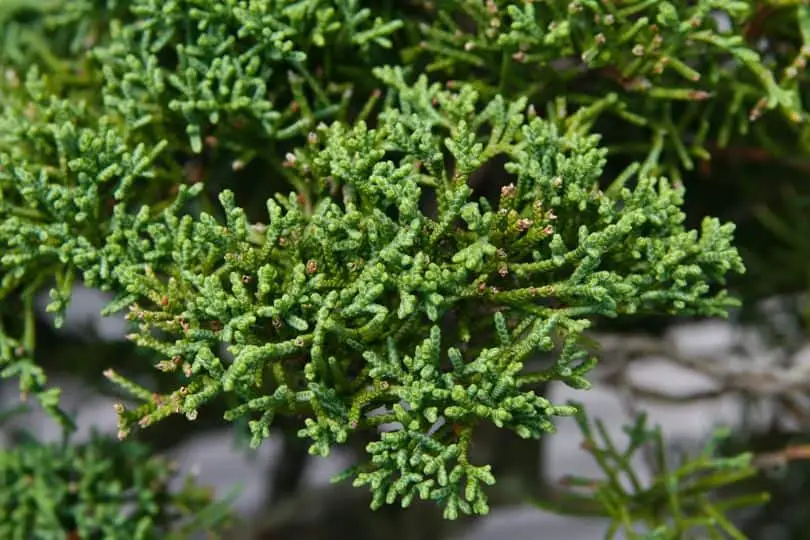
- Common Name: Chinese Juniper
- Scientific Name: Juniperus chinensis
- Mature Height: 50-60ft
- Native/Non-Native: Native to China and Japan but widely planted all over the world
- Flowers/Cones: Dioecious. Berry-like fruit, nearly round.
- Uses: Ornamental plant, good for hedges and foundation plantings
Chinese Juniper is one of the most popular non-native juniper trees in Utah used for ornamental purposes. The height of the plant varies according to the cultivar, and the tallest varieties can reach a maximum height of 50-60ft.
The leaves of the Chinese Juniper are tiny and vary in color from yellow to green to blue. These leaves are evergreen, which means they remain on the plant all year.
When young, the twigs of the Chinese Juniper are thin and flexible, covered in leaves. The plant’s buds are inconspicuous, which means they are not easily noticed. The plant produces berry-like fruits that begin azure and white-waxy but mature to brown.
The Chinese Juniper’s bark is gray-brown in color and fibrous. It has narrow, wrinkled strips. Although the plant’s wood is not often used, it is believed to be similar to that of other junipers.
Although Chinese Juniper is native to China and Japan, it is commonly planted throughout the world. It is well-known for its tolerance to drought, cold, heat, and high-pH soils. However, as with all junipers, it is easy to over-water, so use caution when watering.
Chinese Juniper can be shrubby or erect in shape, and it is shade intolerant. It is one of the most popular decorative junipers, with numerous varieties available. This plant occurs in a variety of colors, including yellow and blue, ranging from the typical shrubby Pfitzer to bigger tree varieties.
Overall, the Chinese Juniper is a hardy and adaptable plant that may be used for hedges, and foundation plantings, and as an eye-catching addition to any landscape. It grows well in hardiness zones 3–7.
Common Juniper Trees In Utah – Frequently Asked Questions (FAQs)
This section contains some of the most frequently asked questions related to common juniper trees in Utah.
Are there juniper trees in Utah?
Yes, there are juniper trees in Utah. Juniper trees can be found throughout the western United States, including Utah. They are well-adapted to the state’s arid and semi-arid regions and can be found in a variety of landscapes, including deserts, canyons, and mountainous areas. Several juniper species can be found in Utah, including the Utah juniper (Juniperus osteosperma) and the Rocky Mountain juniper (Juniperus scopulorum). These trees play an important ecological role by providing habitat and food for wildlife while also contributing to the region’s overall biodiversity.
What are some of the facts about juniper trees in Utah?
Juniper trees in Utah, particularly the Utah juniper (Juniperus osteosperma), have several noteworthy characteristics. These hardy trees thrive in diverse landscapes ranging from deserts to mountains and are well-adapted to Utah’s arid climate. Their growth pattern is twisted and gnarled, with thick, fibrous bark that helps them withstand harsh conditions. Junipers are well-known for their aromatic foliage, which emits a distinct aroma when crushed. They produce small, berry-like cones that mature over several years. Juniper trees are an important part of Utah’s natural heritage because they provide shelter and food for a variety of wildlife species, including birds and mammals.
What are the common uses of juniper trees in Utah?
Juniper trees in Utah have a range of practical and cultural uses. One common use is for their wood, which is highly valued for its durability and resistance to decay. The wood is often utilized in crafting furniture, cabinets, and other woodworking projects. Juniper logs can also be used as fence posts, as their natural oils make them resistant to rot and insect damage. In addition to its practical applications, juniper is utilized for its aromatic properties. The branches and berries are often used in the production of incense, essential oils, and herbal remedies. Juniper holds cultural significance as well, with Native American communities using the tree in various ceremonies and as a source of traditional medicines.
Similar Articles
- Common Oak Trees in Utah
- Common Pine Trees In Utah
- Common Magnolia Trees In Utah
- Common Ash Trees In Utah
- Common Spruce Trees In Utah
- Common Elm Trees In Utah
- Common Birch Trees In Utah
- Common Poplar Trees In Utah
- Common Maple Trees In Utah
- Common Dogwood Trees In Utah
- Common Nut Trees In Utah
- Common Cedar Trees In Utah
- Common Willow Trees In Utah
- Common Alder Trees In Utah
- Common Cypress Trees In Utah
- Common Beech Trees In Utah
- Common Fir Trees In Utah
- Common Plum & Cherry Trees In Utah
- Common Palm Trees In Utah
Sources
The Regional Gardening team makes sure that the information in our articles is accurate by only using sources that are known to be trustworthy. Some of these sources are peer-reviewed journals from government agencies, well-known universities, and scientific research organizations.
- Trees & Shrubs In Yard And Garden, Utah State University Extension
- Native & Non-Native Tree Identification, Utah State University Forestry Extension.
- Native Plants, Utah Native Plant Society.
- A Guide To The Trees Of Utah & Intermountain West, Book By Michael Kuhns, Utah State University Press.


